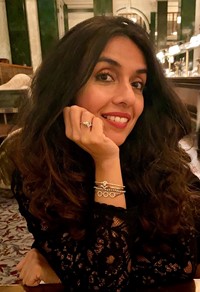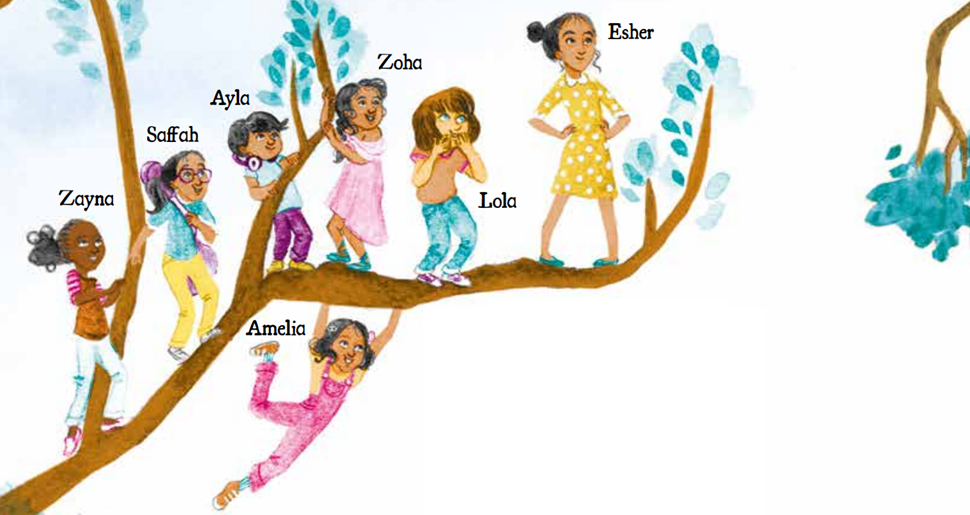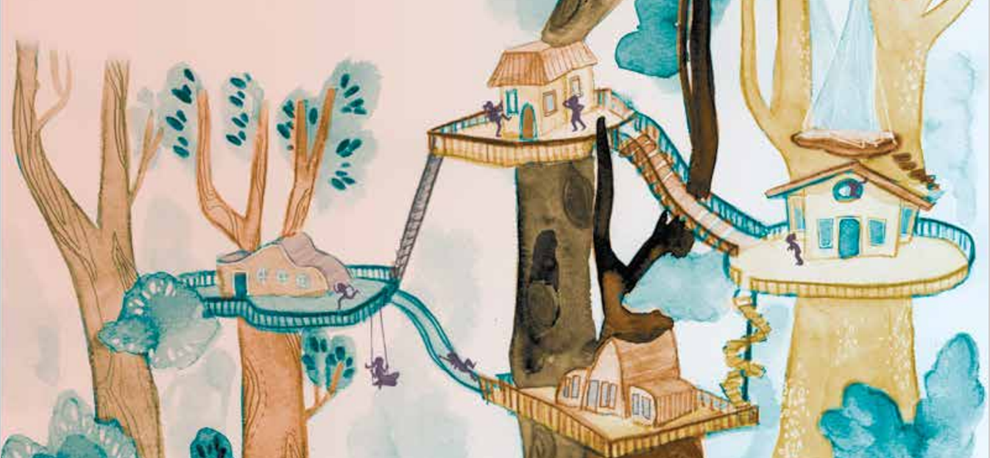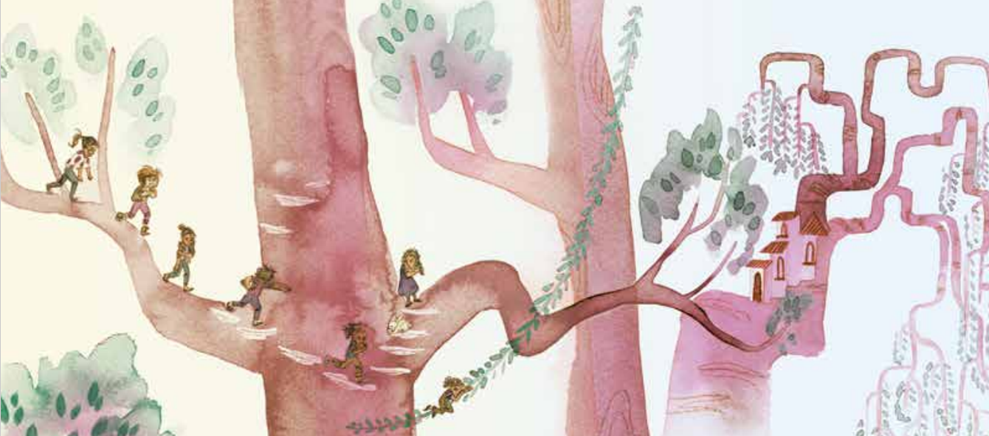Ayisha Malik


About Author
Ayisha Malik's new book for children, Seven Sisters, is a story about seven very different but brilliant sisters. Ayisha was born and raised in south London, and worked as a publicist at Penguin Random House and a managing editor at Cornerstones Literary Consultancy, before becoming a full-time writer.
Illustrator Erika Meza was born in Mexico, where she fell in love with animation before moving to the UK to teach drawing in Decorative Arts in NTU. She won a scholarship to study in L'École Nationale Supérieure des Arts Décoratifs, where she learned to combine bold colour and mark-making with poetry.
Read an extract from Seven Sisters
Interview
Seven Sisters (Stripes Publishing)
August 2021
Seven Sisters is part of the eye-catching Colour Fiction series (Stripes Publishing) that help bridge the gap between picture books and young fiction novels. In this story, we meet seven very different sisters, each with their own talents and interests, who must learn to work together to achieve what they want. We asked author Ayisha Malik and illustrator Erika Meza to tell us more.
Q&A with Ayisha Malik
1. What has been your journey into writing for children and young people?
I was actually approached by Little Tiger who wanted to tell the story of seven very different, but brilliant sisters. I've previously written a retelling of Austen's MANSFIELD PARK for 9-12 year olds. In that way I've been lucky enough to have publishers want to collaborate with me.
2. Why did you want to contribute to the Colour Fiction (young fiction) series by Little Tiger Press with a book for younger readers? What stands out for you about these books? Are there any specific titles that have caught your eye?
When Little Tiger approached me I was taken by the idea of writing about seven sisters who all had various talents; the magical set-up of living in a forest and the way their talents could be explored and celebrated within the framework of the story. But mostly I loved the idea of exploring themes of home and belonging, which I have done in my adult fiction as well.
3. Are the characters in Seven Sisters based on people you know? Have you grown up with a similar group of friends / family?
They aren't based on children I know, but they are all named after nieces and god-children and loved ones' girls. In that sense the book is even more special. And it was a joy being able to write a story in which the girls I know would be able to see themselves.

4. Are any of the group of girls based on you and what you were like as a child?
From a practical point of view, I suppose I am more like Zayna, who's a writer, than anyone else. But really I was just letting the characters develop into who they are. Although whenever one writes, I think there is often a part of the writer in each character they create.
5. Why did you decide to make the children's homes in a treehouse - is that a bit of wish fulfilment? Which tree house would you choose to live in?
As mentioned, the ideas came from the publisher, but this particular aspect struck me as being clever for the ways in which the girls' freedom could be expressed, but also a sense of responsibility for the place in which you live. I also think there's an element of nostalgia when we think about treehouses; a safe space away from adults; a place in which secrets between friends are shared, and a life separate to anyone else being spent with the people to whom you are closest. I'd probably live in Ayla's treehouse. Her serenity appeals to me.

6. What do the children learn during their adventures?
How to think about others and their needs. That they're able to achieve so much more using their combined talents rather than when they're on their own. That life is a balance of needing to be alone, and coming together. I think it's so much about acceptance and understanding.
7. What do you think of the illustrations, by Erika Meza? Do you have a favourite spread?
I loved the illustrations so much. Erika was given pics of the girls who I named after each character and she drew them wonderfully. The story comes to life with those illustrations and I think, even if you don't read the words, it's a visual delight. I love the final spread of the seven girls, with their arms around one another, looking out into the forest.

8. Are you writing more books for children?
Not at the moment. I'm working on an adult fiction title, but do hope I get the opportunity to write another children's book. There's a magic in it that I don't think can be replicated in adult fiction.
9. What do you enjoy doing when you're away from your desk?
Staring out of windows and pacing my flat, hoping a new idea for a story comes to me.
Q&A with Erika Meza
1. How did you become an illustrator? What are your top tips for others who might want to illustrate children's books?
I studied Graphic Design when I was in Mexico, since there was no illustration school where I lived. This meant that I had to do on the side workshops, classes and my own research and practice time to try and develop the skills I needed outside of the university context. This opened the door to being able to study in Paris later, and get an agent - but more importantly (without knowing!) I was also acquiring the two skills I would say any illustrator needs to acquire: self-discipline and self-reliance. You need to be able to work extra hard to keep on learning, keep on developing your artwork, and be resourceful: the internet is a wonderful place where all the knowledge lives. All you need to know is how to find it, and how to acquire it - and the only way to do so is through a lot of practice!
2. What do you enjoy about illustrating young fiction?
You have such a longer book!! It involves a lot of work, but it means you have longer to become acquainted with your characters and explore their many personalities. In this particular story, it helped to have so many pages in order to transmit fully how each of the seven girls is unique in their own special way.
3. What drew you to illustrating this story, Seven Sisters?
Well, the idea of being paid to paint trees (one of my favourite, most relaxing and comfortable things to paint) was irresistible - but it helped that it was with this team, as well. It was on my bucket list!

4. How did you decide what the characters would look like? Was there much doodling involved?
Actually, each of the characters has been named after real girls in Ayisha's life (the author). At the very beginning of the book I was given photos of the girls, and brief descriptions of their personality. At the same time, I was given freedom to try and come up with my own version of each of the girls - which made me pretty comfortable in my sketching. In the end, they became a blend of the real girls with a dash of my own vision of their dress tastes (or practicalities, according to their every-day life!)
5. How did you create the images?
I needed to work quick, and to be able to achieve consistency throughout the whole book. At the same time, I feel that my work is far richer when I paint it by hand - it becomes more spontaneous and energetic. So I drew and painted all of the images using watercolour pencil and inks, moving along on all of the images at once: first sketching on character on all of her appearances, then the next, then the next, then painting it all...
At the end, I scanned it all and added a digital, limited palette of colour with Photoshop, retaining the textures and lines that were done by hand.
6. What were the main challenges in illustrating this story?
Consistency! Being able to keep all of the girls looking like themselves, no matter the angle or the facial expression. There was also one spread that went through so so many versions - we kept pushing it email after email, meeting after meeting, the design team and myself, until it was *just* right.
7. What other kinds of illustration work do you do?
Lately I've been doing a lot of picture books, which are my absolute favourite thing to do in the world. I wouldn't mind doing an adult project one day, though.
8. Where do you do your work?
Anywhere! I've been known to work on kitchen counters, desks, dining tables and on the floor: I move a lot. At the moment, the home studio involves a large desk facing the window with a cat keeping me on my toes, and a nearby couch to relax a little in the evenings.
9. What do you enjoy doing when you're not working?
I love going for walks exploring London, or traveling to new cities to sketch. I also love to eavesdrop people in cafes, and to go out of my way to pet a dog.
 Seven Sisters
Seven Sisters
